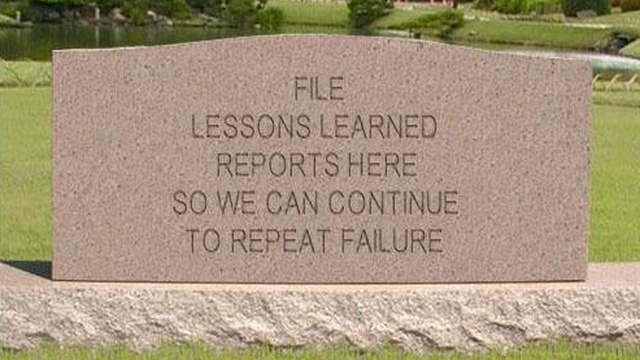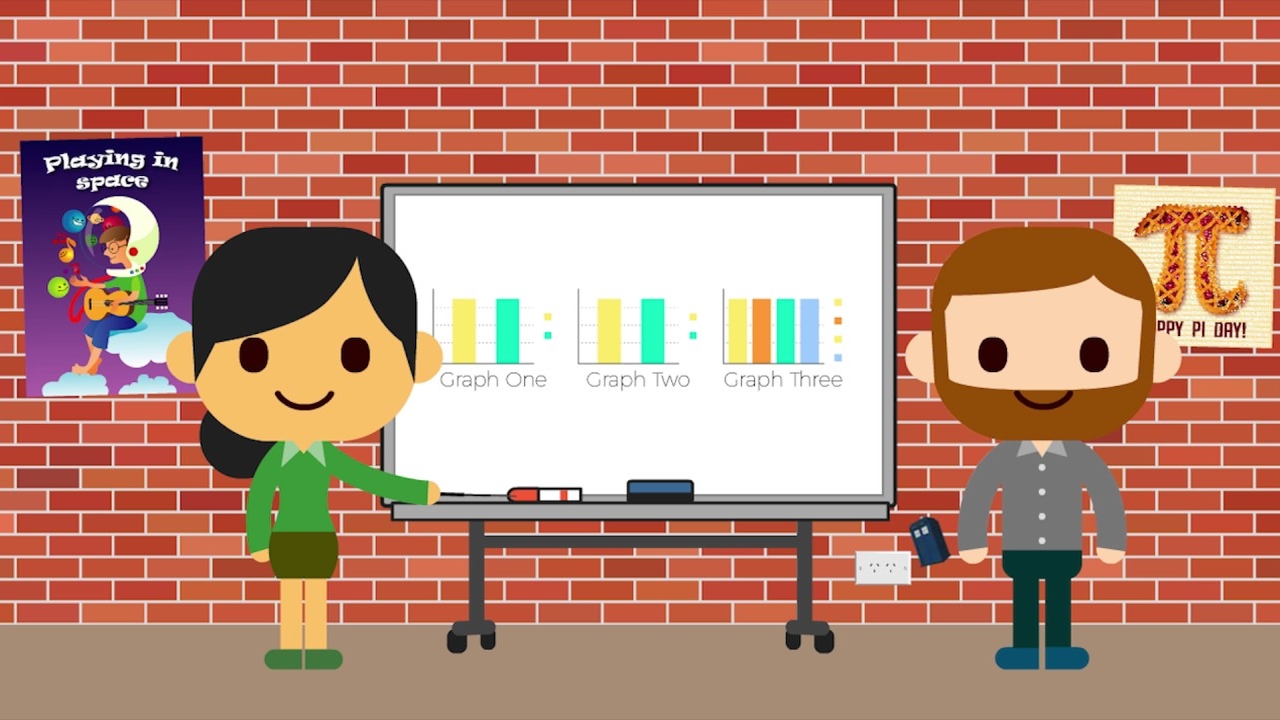
Lessons Learned Part 7: Additional Ways to Capture Lessons
This article is part 7 of a series of articles exploring the Lessons Learned Life Cycle.
No amount of sophistication is going to allay the fact that all your knowledge is about the past and all your decisions are about the future. – Ian E. Wilson (National Archivist of Canada)
I not only use all the brains I have, but all I can borrow. – Woodrow Wilson
In the last two posts I discussed After Action Reviews in detail and also provided some tips on how to facilitate them. AARs are probably the most well-known method for capturing organizational lessons but certainly not the only one. Here’s a brief catalog of other methods that might work for you in different situations, with links to more detailed descriptions. I have split these into three broad categories based on whether they involve looking backward, looking across, or looking forward.
Looking backward
- Retrospect: A retrospect is essentially the same as an After Action Review, with the primary difference being the scope of the review. AARs are often focused on immediate feedback to correct course in the middle of a project or to capture learning while it is still fresh. Retrospects in contrast take a big picture approach, usually being held at the end of a large initiative or as a year-end review. The goal here is to capture large strategic lessons that might be missed when the project team is in the weeds in the middle of the action.
- Quality processes: Because many quality processes are naturally oriented toward root cause analysis and defect reduction, they lend themselves very well to lesson capture. There are many of these in the Lean/Six Sigma literature such as Plan-Do-Check-Act, DMAIC and its various derivatives, Gemba walks, 5-Why analysis, and ISO quality audits. The trick in all of these from a lessons learned standpoint is to not just solve the problem at hand but also extrapolate from that solution to change business processes and procedures in ways that keep similar problems from occurring in the future.
- Appreciative inquiry: As the name implies, appreciative inquiry accentuates the positive. This can be especially useful in situations where emotions run high and there is an urge to find scapegoats to blame. Instead of focusing on what needs to change, it emphasizes what the team or organization wants to keep. The process involves (1) appreciating the best of “what is,” (2) envisioning “what might be,” and then (3) developing a consensus around “what should be.”
- Surprise journal: Similar to appreciative inquiry, the surprise journal can be a method that helps to reframe problems so that they are not as contentious or threatening to discuss. Developed by Julia Galef at the Center for Applied Rationality as a technique for personal enrichment, I have not yet seen it used to capture organizational lessons but I think it could be an effective tool. The basic technique is as simple as described — just keep a journal and record every time when something surprises you. If journals were kept by project team members, this could be a powerful addition to the AAR because the very definition of a surprise is something that goes against expectations. If the team’s surprise journals were then reviewed at the end of a project, this could be the basis for discussions around expectations leading into the AAR.
Looking across
- Peer assist: The peer assist assumes that someone else has already done something similar to what you are about to do, and thus you have the opportunity to capture lessons that were at the expense of someone else. In this process, the team about to embark on a task or project invites peers from outside their own team for a series of discussions. The hosting team first presents the challenge or project they are dealing with. The peers (who have been chosen because of their experience in this area) ask as many questions as necessary to get a full understanding of the situation. They then share their experience and offer up possible solutions to avoid, eliminate, or mitigate the problems that might occur.
- Environmental scanning: Organizations, if they are smart, will try to learn as many lessons as possible from competitors and similar organizations so as not to have to go through those experiences themselves, which can often be costly. Environmental scanning is the process of seeking out and using information about events, trends, and relationships happening in an organization’s external environment that can help it plan its own future. By formalizing this process (i.e., identifying domains of interest, establishing regular search processes and alert mechanisms, assigning responsibility for analysis and reporting, etc.), an organization can acquire valuable lessons at low cost simply by observing.
- Working Out Loud: I have written extensively on Working Out Loud in many other posts so I won’t belabor it here. Suffice to say that when employees actively share their work, inevitably some of that shared information will be lessons about what went right or wrong with the activities they are performing. If that sharing is done on a collaboration platform, it’s available for others to search and find. If the organization has people responsible for managing their lessons learned system, they should routinely scan the collaboration platform for lessons that may be embedded in discussions and blog posts. This “raw material” can then be formalized and packaged for inclusion in the lessons learned database.
Looking forward
- Challenge session: This method and the following two are reminders that lessons can come from imagined history as well as real history (see March et al, “Learning from Samples of One or Fewer”). In fact, the more risky or dangerous a project is, the more valuable it is to derive as many lessons as possible from thought experiments. Think of a challenge session as a meeting full of devil’s advocates. The goal is to identify the basic assumptions behind the status quo, then create provocative challenge statements that contradict them. Assume that these statements are true and then discuss the implications to derive lessons that can be useful going forward.
- Pre-mortem: A post-mortem or retrospect is done at the end of a project. While a retrospect is a neutral examination of events, a post-mortem by its very name implies that something went wrong and that we need to figure out why. A pre-mortem is similar to a post-mortem except that is done before the project ever starts. The team imagines that they are some time in the future after the project has completed, and it was a total disaster. They brainstorm everything that could have possibly gone wrong and catalog these items. This surfaces risks that might otherwise have gone unnoticed and provides the team with a way to develop lessons and create prevention and mitigation plans before the negative events actually occur.
- Future backwards: This method is useful as a tool for change management. The first step is to create a historical timeline that shows the key events that led to the current situation. The future backwards process then asks participants to jump ahead into the future and imagine a “Heaven” scenario where everything has worked out perfectly. Take a step back from Heaven and identify the checkpoint immediately preceding Heaven that led to that end state. Iterate this process, defining preceding checkpoints until you work your way back to the present. Then imagine a future “Hell” (the worst possible future) and perform a similar exercise. The team now has two possible timelines with rails to guide them as they go forward.
Next part (part 8): The Role of the Knowledge Intermediary in the Lessons Learned Life Cycle.
Article source: Lessons Learned Part 7: Additional Ways to Capture Lessons.
Header image source: Elle Ritter on Pixabay, Public Domain.
References and further reading:
- David Cooperrider: Appreciative Inquiry: A Positive Revolution in Change
- Julia Galef: “Surprise! The most important skill in science or self-improvement is noticing the unexpected”
- Kent Greenes: “Peer Assist: Learning Before Doing”
- Gary Klein: “Performing a Project Premortem”
- Moira Levy: A Holistic Approach to Lessons Learned
- James March, Lee Sproull, & Michal Tamuz: “Learning from Samples of One or Fewer”
- Straits Knowledge: KM Method Cards
- Unicef Knowledge Exchange: “Retrospect”






